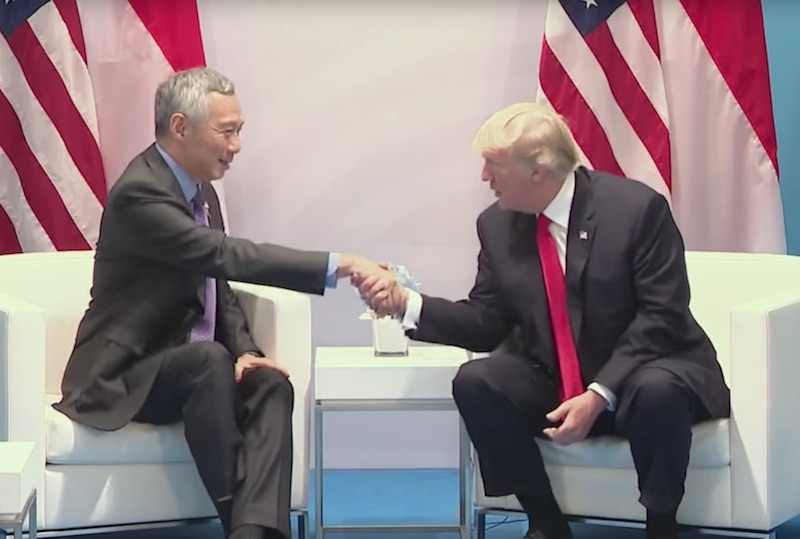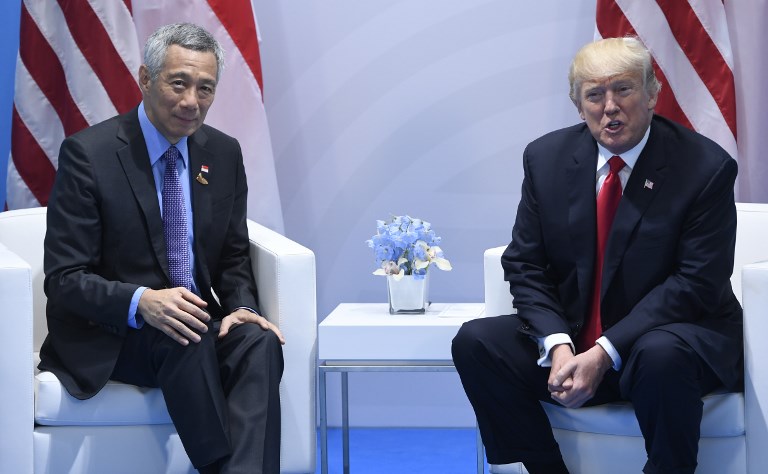If you’ve watched the very brief session between Prime Minister Lee Hsien Loong and US President Donald Trump in their first face-to-face meeting at the G20 Summit, you’d have noticed just how the former might have seemed a little… twitchy.
Such awkwardness and discomfort between the two is understandable, of course, given their differing opinions on the Trans-Pacific Partnership trade pact, which was going semi-smoothly under Trump’s predecessor. They may have looked rather agreeable on camera, but from PM Lee’s visible restlessness and the vibe that he just wanted to get it over with ASAP, we can’t help but think there may be more going on there.
So we got an expert to dissect what was going on.
Trump seems to have a consistent, relaxed posture throughout his meetings with other leaders — but he’s just going through the motions, says Christian Chua, a body language expert of over 18 years. Having been a Body Language and Speech Analyst for Channel NewsAsia in the US Presidential Debate (and someone who predicted Trump’s 2017 win), Chua knows the in-and-outs of the US president’s behaviour.

Trump looks like he’s ready for the whole thing, Chua says — a scripted routine that entails saying something gracious about each leaders’ nation.
As for PM Lee, Chua didn’t think that his levels of unease were off the charts.
“…he fidgets a lot during that short few seconds, which says that he is friendly, but it also means that he is slightly awkward about the meeting or the publicity”.
Unlike Putin’s authoritative bearing, PM Lee seemed more exhausted — and Chua notes that it’s important to take into context when the meeting took place.
“The time-zone difference could take a toll on our body and this could be one of the reasons why Mr Lee seems very tired,” the analyst analyzes. “Mr Lee’s crossed leg posture will be often read as being closed, likely a sign of anxiousness.”

UK’s prime minister Theresa May had less of an awkward time with Trump during the meeting, but Chua notes that its due to the fact that the two leaders have already had extensive discussions with each other. Furthermore, the meetings Trump had with various other leaders were likely to have been scripted and rehearsed beforehand. “A more candid conversation would provide a better read,” states Chua.
Now, about that handshake. PM Lee’s effeminate-looking hands in Trump’s paws have been widely derided by netizens and the public — but from Chua’s point of view, it’s “nothing significant”.
“In reality the hand shake started off pretty normal. But since President Trump was on Mr Lee’s right, he gave an upturned hand,” Chua notes. “President Trump then raised his arm and there was no way Mr Lee could have responded except to angle his wrist in an awkward manner.”

Awkward it may be, but at least it was pretty consistent throughout Trump’s meetings with other world leaders. So, nothing to lose your marbles about, we suppose.
Presidentially, Chua is inclined towards Ronald Reagan’s body language, who he notes to have extensively used both non-spoken signals and facial expressions to communicate effectively. Former president Barack Obama also gets props for being clever in his movements.
“Obama can be considered a skinny president but compensates this with his usual jog up and down the aeroplane flight stairs,” Chua says. “By doing so, one will portray that he is youthful and energetic and has the spirit to get things done.”





Reader Interactions